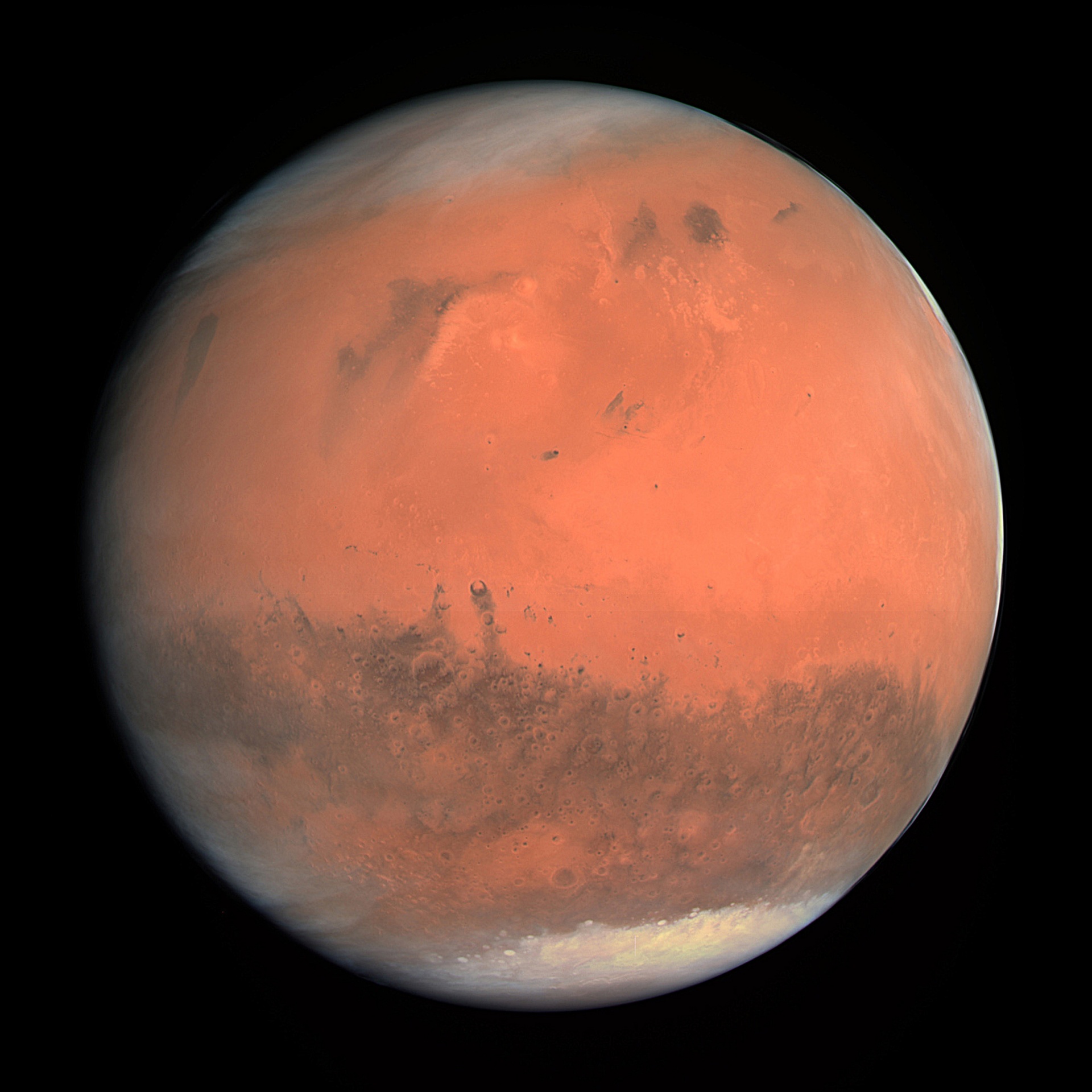Could Mars someday be a travel destination?
For centuries, humans have looked at a little red speck in the sky and wondered if there might be something – or even someone – up there.
After scientists eventually discovered Mars had polar ice caps and terrain somewhat similar to Earth’s, it begged the question: Could Mars be a place where people could not just visit but one day inhabit? But more importantly, what’s next?
Cal State Long Beach Geography Professor Dr. Christine Rodrigue teaches The Geography of Mars, the first of its kind offered as a regular course at any university. “At least on Earth,” she said.
The College of Liberal Arts class covers the history of Mars exploration, an examination of remote sensing fundamentals and data sources. It also looks at the planet's basic characteristics. Students study the physical regionalization of the Martian surface, its underlying tectonic and geomorphic processes, and the planet’s climatic regions.
“Of course, we discuss Mars’ history as a place of wonder and fantasy, not to mention the now-distinct reality of a person one day setting foot on Mars,” she said. “But there’s a lot to be done before that happens.”

In Rodrigue’s course, explorers will have to know where to go before they try to get there. She and her students conduct crater counts, perform analyses and map the results. Some of the work has been cited by other researchers as the knowledge about Mars grows.
“To begin with, human-crewed space exploration is incredibly expensive,” Rodrigue said. “Efforts like Space X are betting on ‘reusable’ rockets to make things more economically feasible, but the costs are still – no pun intended – astronomical.” (NASA looked into the cost of traveling to Mars back in 2004, and the agency estimated a cost of $10 billion per person. SpaceX’s early goal, however, is a less lofty $50 million per person.)
For human explorers, she noted, the adventure also could be costly.
“We have to be honest about the inherent dangers associated with traveling so far from Earth and for such long periods of time,” Rodrigue said. “If we’re able to put people on Mars, they’ll have to be somewhat self-sufficient – at least until they receive new provisions.”
Rodrigue likened traveling to Mars to the explorers who first went to Antarctica and set up bases. They depended on when the next shipment of supplies and personnel would arrive.
“Since a trip to Mars would be even farther, more difficult and infinitely more demanding, there is a lot more that can go wrong,” she said. “Regular events like Mars’ massive, violent dust storms are a challenge beyond the problems posed by space travel and landing. We have to acknowledge all of the possibilities. Most people don’t realize that about half of all the missions to Mars’ surface have failed. And those are un-crewed missions.”
Rodrigue, who has been working with NASA and the Jet Propulsion Laboratory in various ways since her days as a college student, said there would be advantages of having scientists on the planet.
“This is an exciting opportunity worth pursuing,” she said. “We can send probes and rovers … but it takes an extraordinary amount of time for teams on Earth to resolve issues with a robot working millions of miles away. If a person is there with the equipment, on-site, they can deal with questions immediately.”
For Rodrigue, her hope is that the work she and her students put into the effort might someday help people not only better appreciate a far-off planet, but also understand the one they currently inhabit.
“Most importantly,” she said, “Becoming familiar with how Mars works builds upon our understanding of Earth and actually makes us rethink things we thought we knew about our home planet.”





